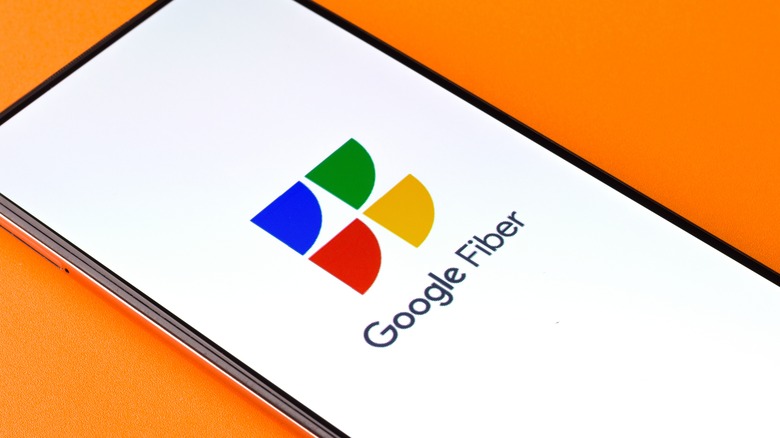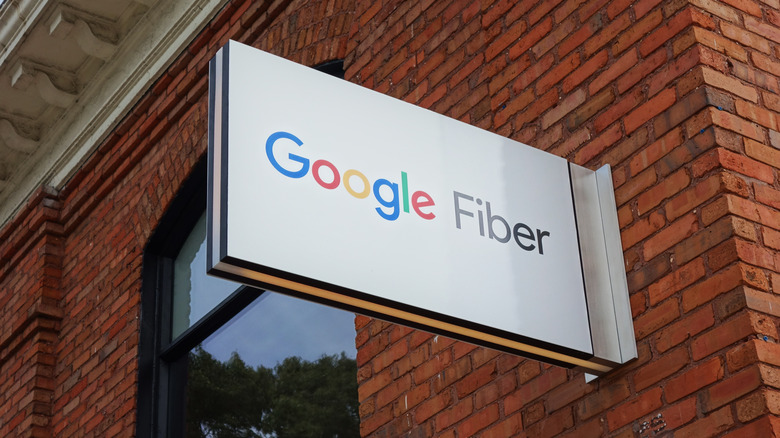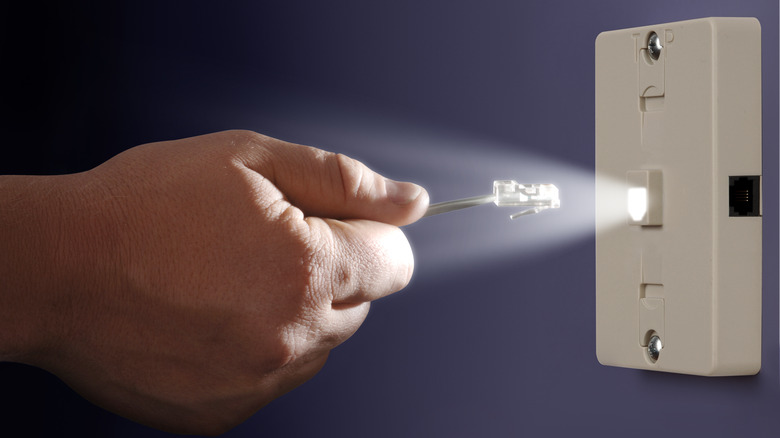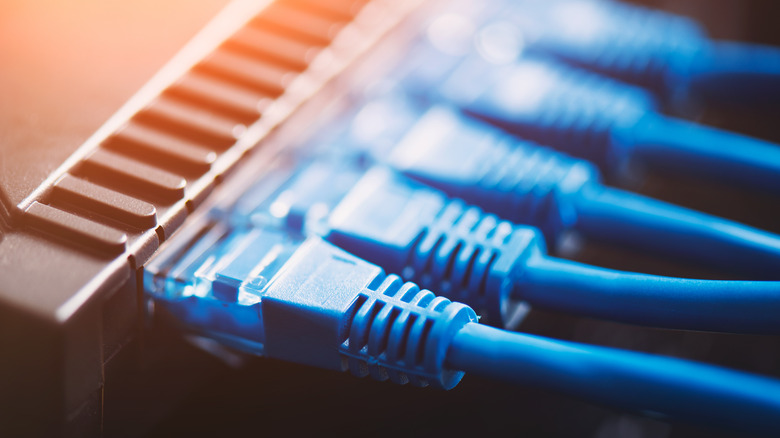Google Fiber Vs. Google Fiber Webpass: What's The Difference?
You've probably heard of Google Fiber, and you may have heard of Webpass (now rebranded as Google Fiber Webpass), but do you know the difference? While the names are similar and both provide the same service, Google Fiber and Google Fiber Webpass are actually two distinct ways to connect your home to the internet. Both are owned by Alphabet Inc., Google's parent company, and both are internet service providers (ISPs) that give paid subscribers access to the internet, though locations where these services are available are still fairly limited.
That's mainly because building the infrastructure for a neighborhood's internet network, traditionally using lengthy cables, is expensive and time-consuming. This is why you typically only have one or two options when it comes to ISPs — it's very hard for a competitor to create a new network from scratch. If any company has the resources to give it a shot, it's Alphabet.
By pushing the technology itself, Alphabet can provide customers with faster internet than what may otherwise be offered in any given market. Google Fiber and Google Fiber Webpass use two distinct approaches to the way homes are physically connected to the web. If you happen to live in a city that offers both services, there are some differences like speed and cost you may want to account for before deciding which provider to go with.
What is Google Fiber?
Google Fiber is an internet service provider that uses, like most of its major competitors, a network of cables to directly connect buildings to the internet, though it uses fiber-optic cables (hence the name). Fiber-optic cables use pulses of light to transmit data, as opposed to the slower coaxial cables of traditional cable companies that use electricity. While incorporating some pre-existing infrastructure, Google Fiber physically laid much of these newer cables itself, a costly and labor-intensive process. However, by creating a network from scratch, it made it easier for Google Fiber to offer impressive speeds, giving it a distinct advantage over other ISPs.
Because of the nature of connecting a network with lengthy cables, the closer a location is to a preexisting Google Fiber network, the easier it is for the service to expand to that area. Since installing this infrastructure is made even more complicated in dense urban areas, Google has chosen more rural locales and smaller cities to introduce its technology. Once the fiber-optic cables are laid throughout a neighborhood, homes and businesses can individually connect to them.
What is Google Fiber Webpass?
In 2016, Google Fiber acquired Webpass, a smaller ISP, and incorporated its network of connected neighborhoods into its own. However, the technology that brings Webpass internet to your home is different from what Google Fiber uses, so don't let the name fool you.
Unlike Google Fiber, Google Fiber Webpass is wireless, using millimeter wave technology to connect homes and businesses to the internet. Individual buildings, like apartments and condominiums, are connected by an antenna on the roof, bypassing the need for massive infrastructure projects that lay down cables. While physical cables will still attach homes within a building to the antenna on the roof, this means that buildings in a neighborhood aren't connected to each other in a traditional web-like fashion, but rather to a central location beaming the internet directly to them.
If a building is in range of one of these central locations, it doesn't take much to install an antenna and add them to the Webpass network, which makes it easier for Google to introduce the service to new neighborhoods. However, with the current state of the technology, wireless internet can't reach the speeds offered by fiber-optic cable.
Speed and hardware
When Google Fiber first launched in 2010, it boasted an online speed of 1 gigabit per second, which at the time was a whopping 100 times the country's average internet connection. Today, Google Fiber offers customers multiple plans, including an option that can reach download speeds of 2 gigabits per second (or 2,000 Mbps) and upload speeds of 1 Gbps. This plan currently costs $100 per month, though the 1 Gig plan is $70 per month and customers in some qualifying areas can subscribe to a 100 Mbps plan for $20 per month. Installing Google Fiber requires a small box called a Fiber Jack to be placed in your home, which you can then connect to a router and Wi-Fi. You can use your own preferred router, but to achieve the top speeds of the 2 Gig plan, you'll need the company's proprietary Google Fiber Multi-Gig Router.
Because it's wireless, Webpass is a little slower than Google Fiber, topping out at 1 Gig, and could be slowed by the building's infrastructure. Like Google Fiber, the 1 Gig plan is $70 per month, though it's discounted to $63 per month with an annual contract paid upfront. If a Webpass antenna is on your roof, you can connect to it directly through an ethernet jack installed into your wall, with no other equipment necessary. You'll probably want to connect a Wi-Fi router or ethernet hub to use multiple devices, but it really is that straightforward. Unlike some competitors though, you're not beholden to purchase this equipment from the ISP itself.
Availability
Google Fiber first launched in Kansas City and has since expanded to neighborhoods in several towns and cities. Many are concentrated in the southeastern United States, as well as Texas, Utah, and parts of the Midwest. Cities offering Google Fiber include Austin, San Antonio, Orange County, Huntsville, Nashville, Charlotte, and Atlanta. When Google Fiber purchased Webpass, locations already covered by the latter were incorporated into Google's network.
Because Webpass was a Silicon Valley startup, its locations skew more urban than Google Fiber's and are concentrated on the West Coast. Availability is limited to specific buildings that have installed Webpass antennas on their roofs and can be found in cities including San Francisco, San Diego, Oakland, Denver, Seattle, Chicago, and Miami.
Both Google Fiber and Google Fiber Webpass are continually expanding to new locations, but for now, areas that offer both are pretty limited. Which service you end up with will likely come down to where you live. You can find a full list of current and upcoming locations for each service here.




